| There was a chaotic scene at the dock to get our tickets, as
another boat going to the beach was leaving the same time we were. But we
secured our tickets ($90 each, including breakfast and lunch) and boarded. |
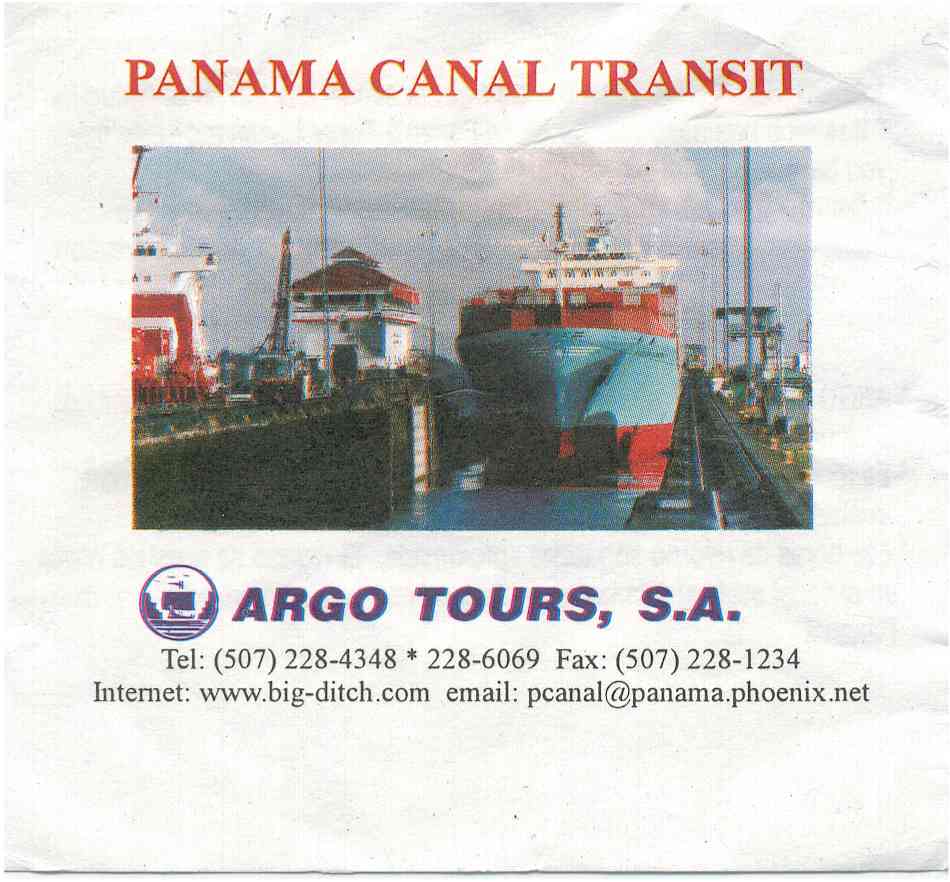 |
| The docks are adjacent Panama City's container port with
these three huge cranes, some of the largest in the world, we were told. |
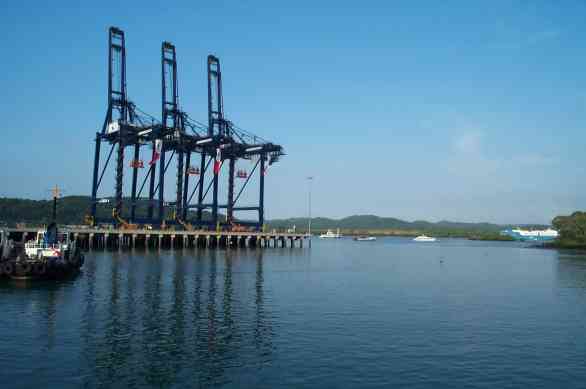 |
| Looking to the south, you see the pretty Bridge of the
Americas, which marks the south entrance to the Panama Canal. |
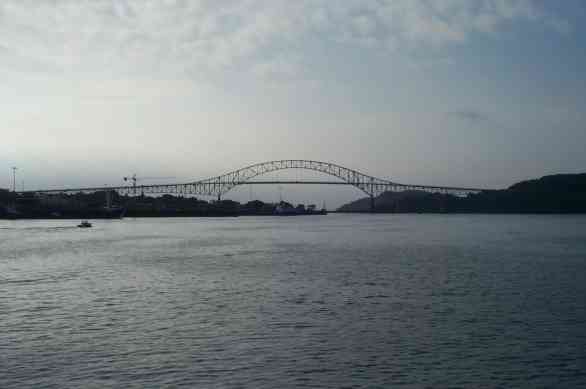 |
| Our boat was your basic tourist boat. |
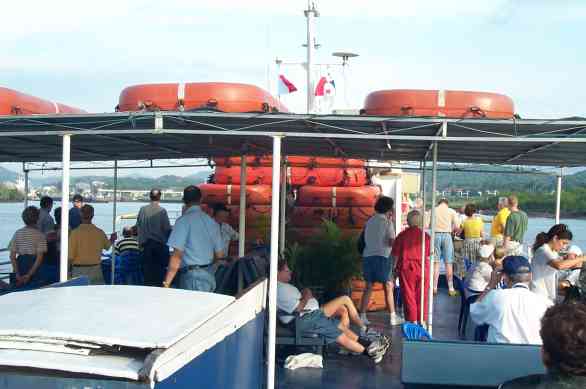 |
| Shortly after we set out, we came across a huge container
ship, the Verona, as it was about to enter Miraflores Locks. |
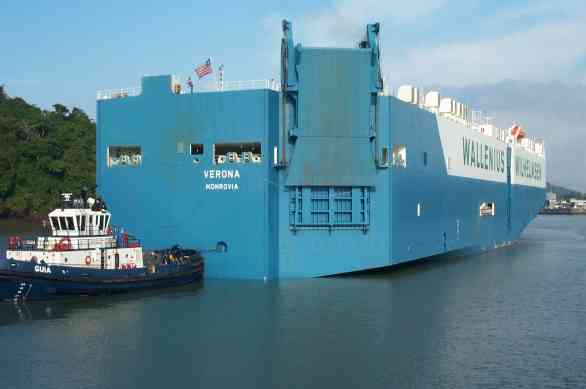 |
| At each set of locks, there are two "chambers"
ships can enter - one to the right and one to the left. The arrow tells
the ship which chamber they should enter. Our tourist boat had the left
chamber all to ourselves; the Verona was in the right chamber. |
 |
| Water is pumped out of and in to the chambers as the boats
enter and leave. |
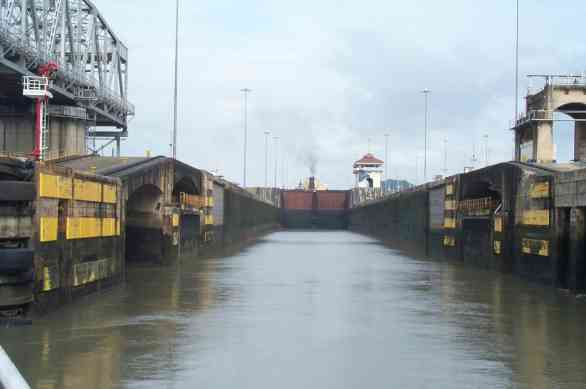 |
| As you can see, the walls in the chambers are quite high. |
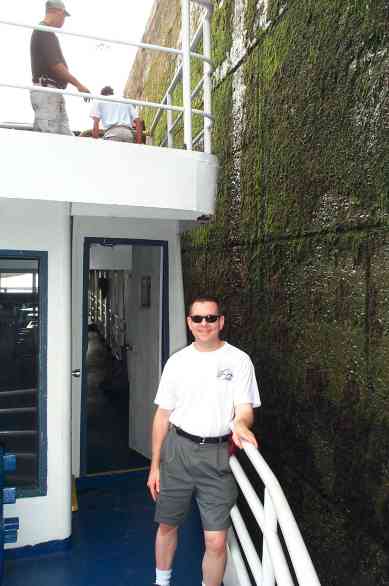
|
| Hamming it up as we waited for the chamber to fill up with
water. |
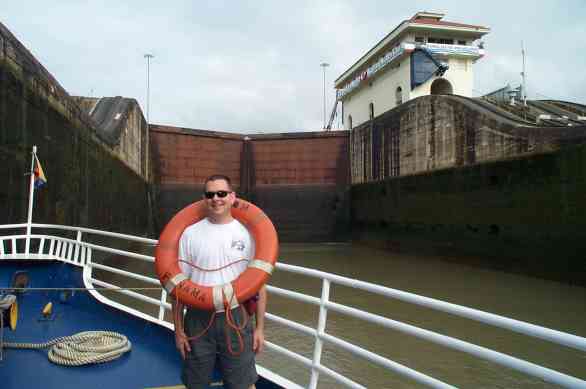 |
| Still in lock chamber, with Verona to our side. |
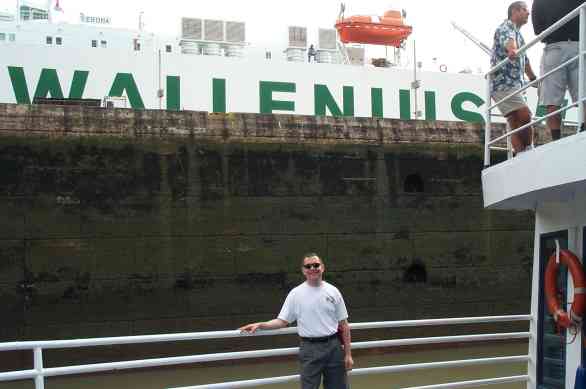 |
| The Argo Line was our carrier for the cruise. I liked their
web site, which you can just make out on the t-shirt: big-ditch.com |
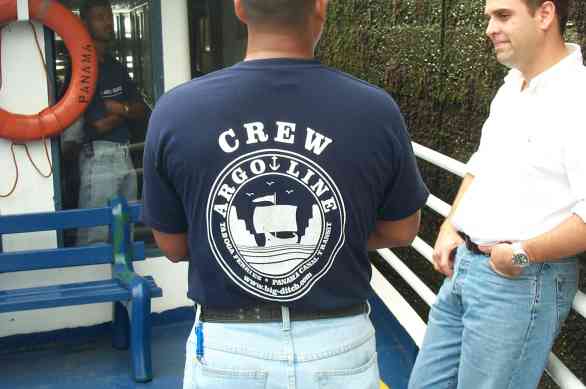 |
| Crewman untying our boat from the ropes as the chamber is
just about full. |
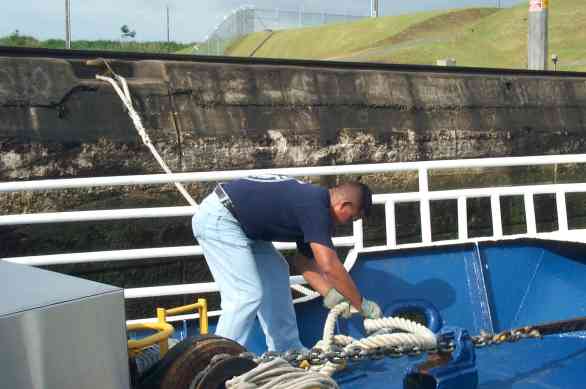 |
| Once the chamber has filled, the doors at the other end of
the locks open, then it's into a second chamber. |
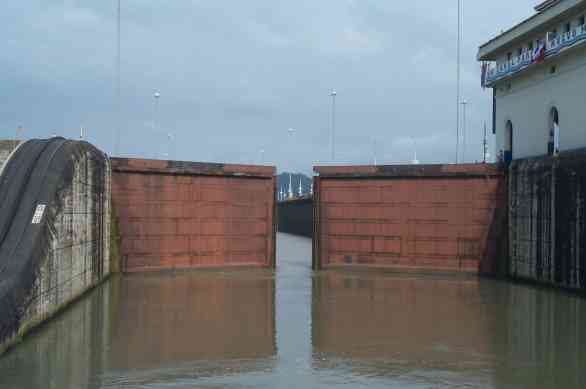 |
| Look how high the Verona is riding at the top of the lock
chamber. |
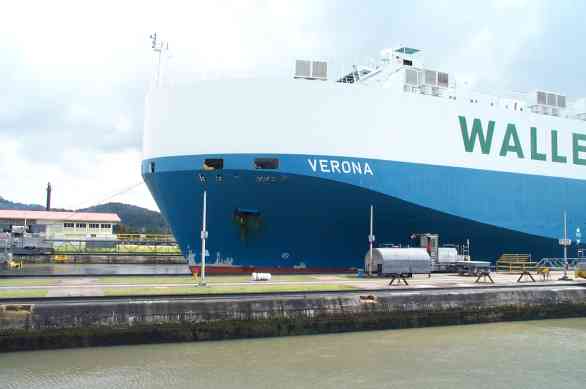 |
| Now the water in the second chamber is at the level of
Miraflores Lake, and we're almost ready to motor out of the lock. |
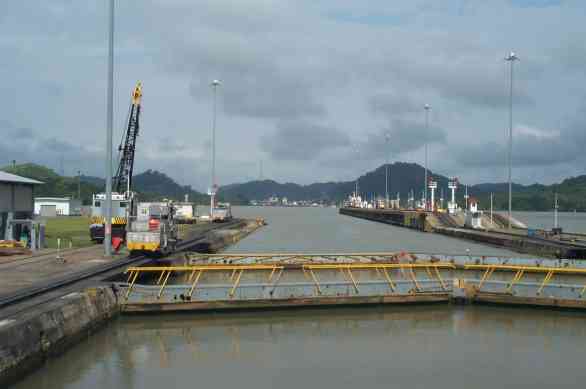 |
| The doors to the second chamber start to open. |
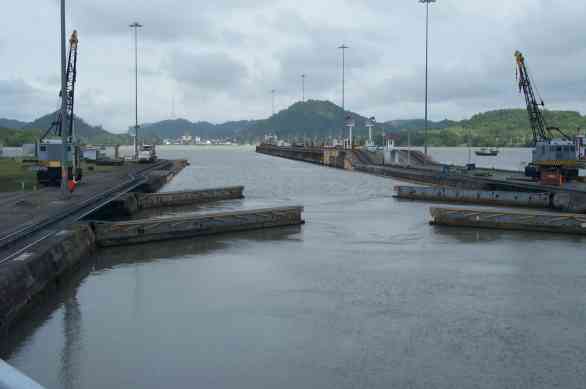 |
|
 |
| Now we're in Miraflores Lake. They tie boats that are
waiting their turn to get through the next set of locks to this huge
structure in the middle of the lake. |
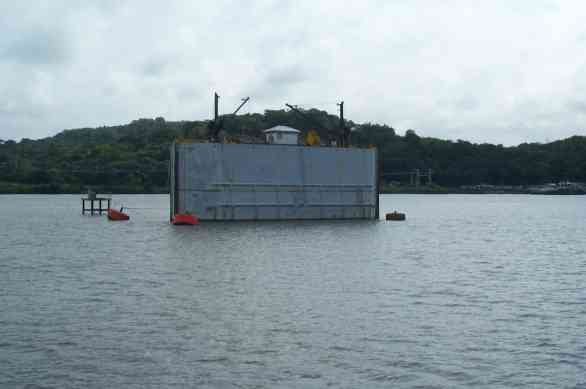 |
| After going through the Pedro Miguel locks, we sailed into
the Gaillard Cut, the highest point of the canal. The canal builders had
to cut through rock in places to build this portion of the canal. |
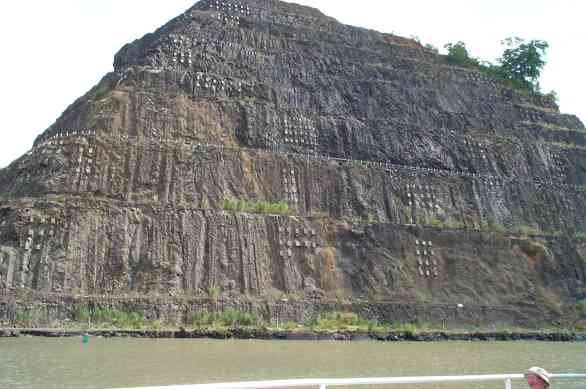 |
| Dredging is a continual activity on the canal. |
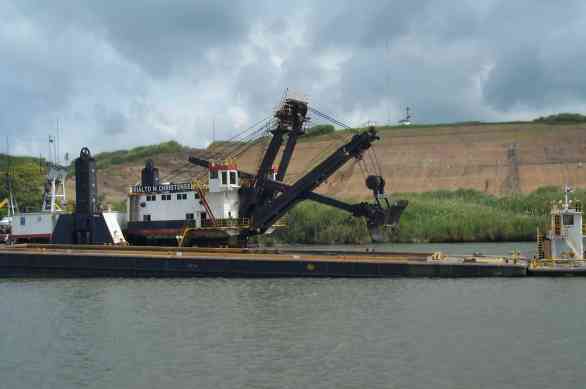 |
| Continuing through the Gaillard Cut, you see directional
indicators on the hills that flank the canal. The plus signs indicate to
ship traffic that it's OK to move in that direction through the cut. |
 |









































